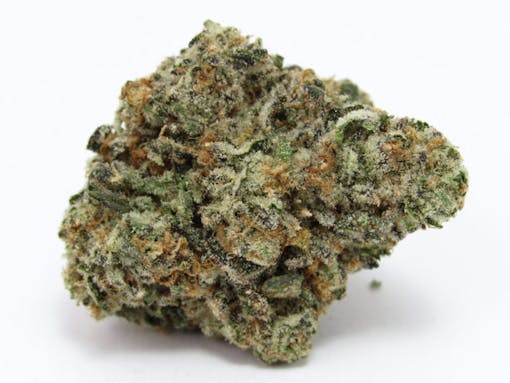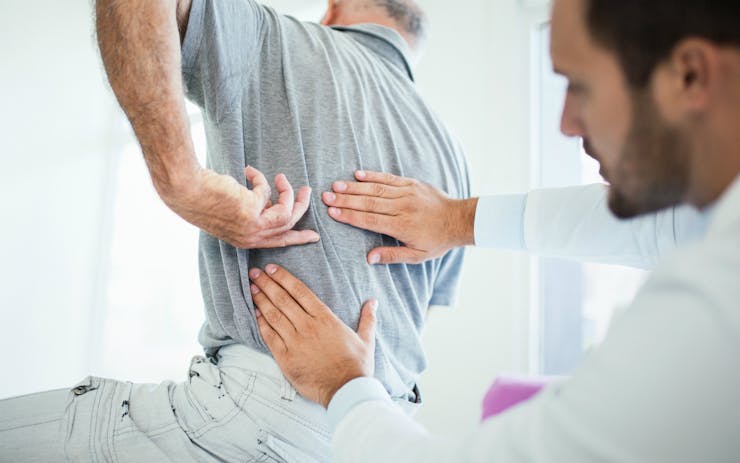Chronic pain can make your life miserable. But according to a March study using real cannabis—high-THC flowers, and oils containing CBD may help. The Australian study published in the journal Drug Science, Policy and Law found significant reductions in pain and notable increases in quality of life. The study measured results after three months of use. During their experience with cannabis, patients felt better, slept better, and both their mood and general health improved. While these results are still preliminary, the authors state they, “are promising and indicate significant improvements in pain, quality of life, sleep, and mood.”
Studying chronic for pain
Using cannabis for chronic pain is nothing new. It is one of the most common conditions patients aim to treat with medical cannabis. Several large systematic reviews have already found that cannabis can be an effective aid for bringing down chronic pain.
For example, The National Academies of Sciences, Engineering, and Medicine put out an extensive review of cannabis’ medicinal properties in 2017. They reported “conclusive or substantial evidence that cannabis or cannabinoids are effective for the treatment of chronic pain in adults.” Other reviews have found similar evidence that cannabis can provide chronic pain relief.
These kinds of reviews—usually drawing from many double-blind studies—have long been considered the gold standard for research. But some researchers now point out that systematic reviews still contain limitations. They often include only highly uniform studies that don’t reflect how patients use cannabis in the real world.
Researchers in this recent study wanted to learn more about whether cannabis was helping actual chronic pain patients. So, they used an observational method, which looks at the real-world use of cannabis, and examines the real-world results.
Real pain patients, using real weed

The study—‘Medicinal cannabis for pain: Real-world data on three-month changes in symptoms and quality of life’—followed 55 adult chronic pain patients, giving them questionnaires to assess their pain, sleep, mood, and quality of life. Many of these patients had other conditions, as well, including stress and anxiety disorders. Since this is common for chronic pain patients in general, researchers felt this better replicated the real-world patients who might try cannabis.
Doctors deemed all the patients eligible for medical cannabis, but none had been using cannabis at the beginning of the study. Australian doctors prescribed each patient cannabis products on an individual basis, rather than receiving identical products and doses. This meant they could use products tailored to their specific needs, just like the average cannabis patient. These products included both flower and oils, and had a variety of different CBD and THC levels.
Shop highly rated dispensaries near you
Showing you dispensaries nearResearchers assessed the cohort at the beginning of the experiment before their cannabis regimen had begun, and then again after three months of cannabis use. Most in the cohort started with relatively poor health, with high levels of pain, problems sleeping, and low ratings for mood and quality of life.
Less pain and better lives with cannabis

After three months of cannabis use, the chronic pain patients reported significant improvements on all measures. Not only had the severity of their pain gone down, but it interfered less with their life. They had raised their scores significantly for quality of life, general health, mood, and sleep. The improvements proved meaningful. According to the researchers, led by Kylie O’Brien at the NICM Health Research Institute, Western Sydney University, New South Wales, Australia —the “effect sizes in all cases were moderate to strong.”
“We found substantial improvements … higher than those typically reported in meta-analyses for antidepressants.”
Prof. Kylie O’Brien, NICM Health Research Institute
For depression, researchers stated: “We found substantial improvements … higher than those typically reported in meta-analyses for antidepressants.”
Cannabis was very well-tolerated by the pain patients. In the 55-person cohort, one 29-year-old man reported extremely mild adverse reactions: dry eyes and feeling cold. The symptoms resolved the same day they began.
Study limitations: low numbers, no controls
Of course, no study is without limitations. This one had a relatively low number of participants, making it harder to generalize the results. The study also lacked a control group which means we can’t completely rule out the possibility of a placebo effect causing positive change.
While observational studies like this one can better replicate real-world cannabis use, they are unblinded, which could introduce bias. Still, the authors suggest that “it is important that the merits of all types of research designs are taken into account in assessing the evidence of effectiveness of medical cannabis.”
Mounting evidence for pain management
The real-world data widely fits in with other, bigger surveys on the topic. In perhaps the biggest survey, 92 percent of medical cannabis users found it efficacious, according to a California Behavioral Risk Factor Surveillance System (BRFSS) survey of 7,525 adults, published in 2014.
Experts’ advice? Lower cannabis costs and increase access
Cannabis works in different ways for different people. Different types of studies keep adding detail to the picture of how the botanical drug works. The authors conclude that the full body of evidence suggests cannabis may offer real relief for chronic pain patients, and demonstrates “a need both to make medical cannabis more widely available and to reduce financial costs associated with its use.”





